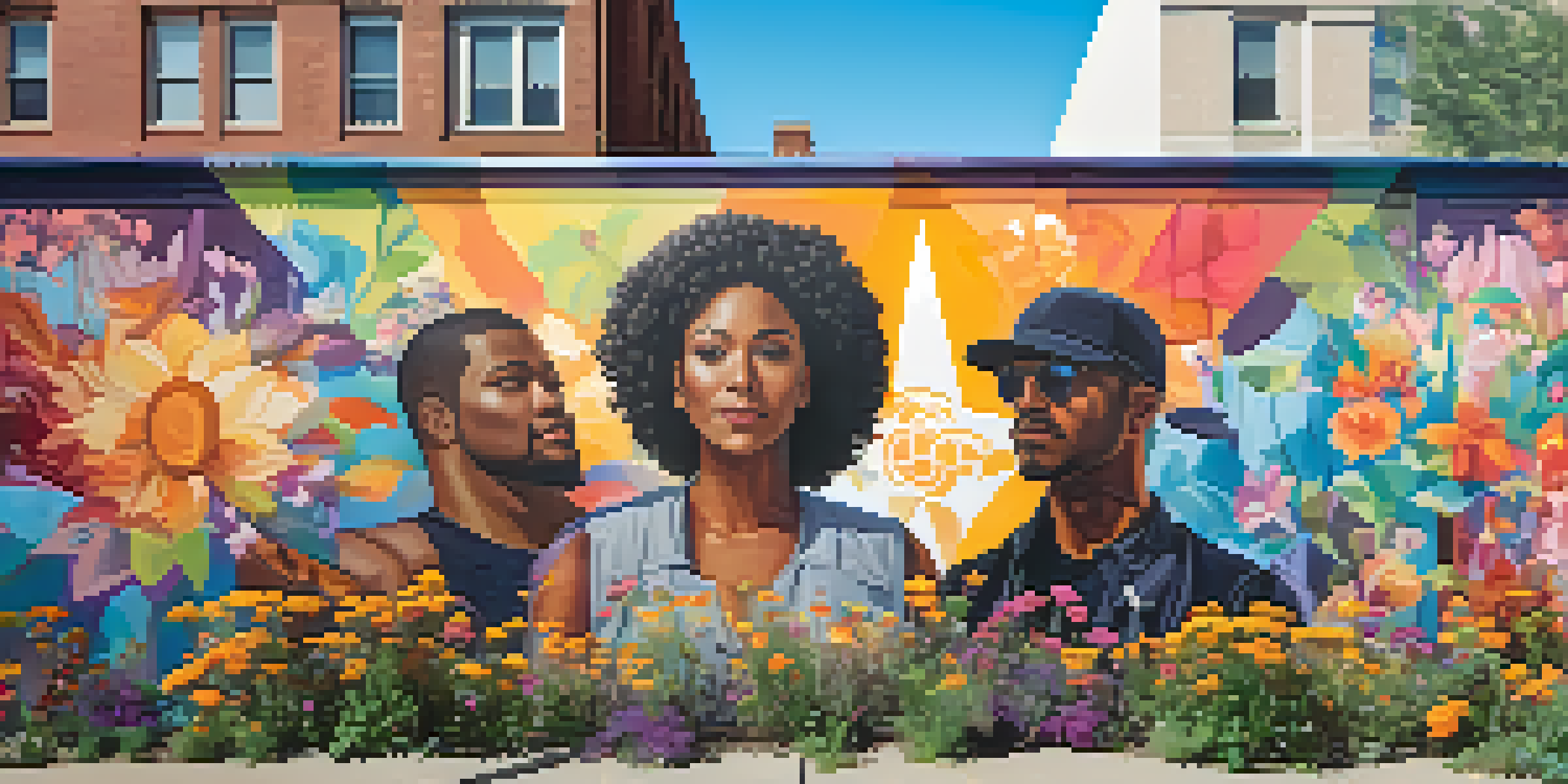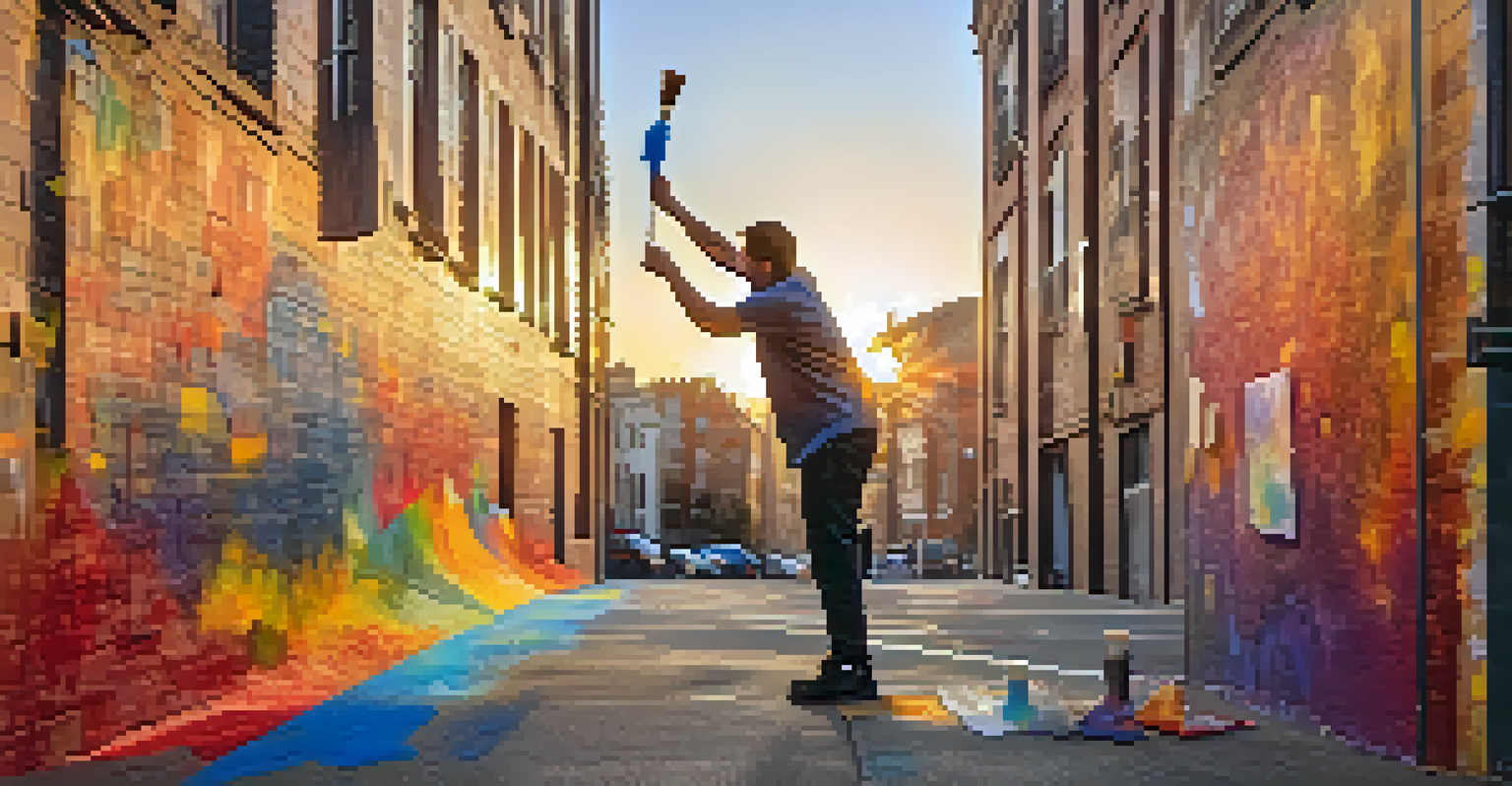Civic Identity in the Age of Social Media and Art

Understanding Civic Identity in Modern Society
Civic identity refers to the sense of belonging and engagement individuals feel within their communities. It encompasses how people perceive their roles and responsibilities as citizens, which can be influenced by various factors, including culture, politics, and social interactions. In today's rapidly changing world, the way we express and develop our civic identity has evolved, particularly through the use of social media.
Art is a weapon in the battle against ignorance and injustice.
Social media platforms allow for immediate and widespread sharing of ideas, enabling individuals to connect and engage with others who share similar values or concerns. This connectivity can foster a sense of community and solidarity, leading to collaborative movements and initiatives that reflect collective civic identity. However, it can also create echo chambers, where diverse perspectives are drowned out by prevailing narratives.
As we navigate this digital landscape, understanding civic identity becomes crucial. It prompts us to reflect on how we can best utilize these platforms to foster inclusivity and encourage meaningful dialogue, ultimately enriching our communities and reinforcing our roles as active citizens.
The Role of Art in Shaping Civic Identity
Art has long been a powerful medium for expressing civic identity, serving as a reflection of societal values and issues. Whether through visual arts, music, or performance, artists often tackle themes related to community, governance, and social justice. In this way, art acts as a catalyst for discussion, challenging viewers to rethink their perceptions and engage with the world around them.

With the rise of social media, artists can now share their work with a global audience, amplifying their messages beyond traditional galleries or theaters. This democratization of art allows for diverse voices to emerge, each contributing to the tapestry of civic identity. As a result, we see a rich array of artistic expressions that resonate with various demographics and address pressing social issues.
Civic Identity in a Digital World
Civic identity is shaped by social media, influencing how individuals perceive and engage with their communities.
Moreover, art can inspire action and mobilize communities. For instance, murals depicting social justice themes can spark conversations in neighborhoods, encouraging residents to unite for a common cause. This synergy between art, social media, and civic identity underscores the importance of creative expression in shaping our understanding of civic responsibilities.
Social Media as a Tool for Civic Engagement
Social media platforms like Twitter, Facebook, and Instagram have transformed the way we engage with civic issues. They provide spaces for discussion, activism, and organization, allowing users to share information and rally support for various causes. This accessibility can empower individuals to take action in their communities and beyond, fostering a sense of agency in civic matters.
Social media is not about the exploitation of technology but service to community.
However, the effectiveness of social media as a tool for civic engagement often depends on the digital literacy of its users. Understanding how to navigate these platforms, identify credible sources, and engage in constructive dialogue is essential for meaningful participation. Unfortunately, misinformation and polarized content can hinder these efforts, making it critical for users to approach social media with a discerning eye.
As we harness the power of social media for civic engagement, it's important to cultivate a culture of respectful discourse. By encouraging open conversations and valuing diverse perspectives, we can create a more vibrant civic identity that reflects the complexities of our society.
Navigating Challenges in Digital Civic Identity
While social media and art can enrich our civic identity, they also present challenges that must be addressed. For instance, the anonymity of online interactions can lead to negative behaviors, such as trolling or harassment, which can deter individuals from participating in civic discussions. This toxicity can create a hostile environment that undermines the very essence of community engagement.
Moreover, the pressure to curate a perfect online persona can lead to inauthentic representations of civic identity. Individuals may feel compelled to conform to popular narratives or trends, rather than expressing their genuine beliefs and experiences. This can dilute the richness of civic identity, as it becomes overshadowed by the pursuit of likes and followers.
Art as a Catalyst for Change
Art plays a vital role in expressing and shaping civic identity, inspiring action and fostering community dialogue.
To navigate these challenges, it's essential to foster a culture of authenticity and support within online communities. Encouraging individuals to share their unique perspectives and experiences can help cultivate a more inclusive and vibrant civic identity that embraces the diversity of voices in our society.
The Intersection of Art and Activism on Social Media
Art and activism have always gone hand in hand, and social media amplifies this intersection more than ever. Artists frequently use their platforms to raise awareness about social issues, mobilizing their audiences to take action. This synergy allows art to serve as both a form of protest and a means of promoting civic identity.
For example, during significant movements like Black Lives Matter, artists have created powerful visuals and performances that encapsulate the struggles and aspirations of marginalized communities. These artistic expressions not only inform viewers but also inspire collective action, showing how art can be a force for civic engagement. The immediacy of social media allows these messages to spread rapidly, reaching individuals who might not otherwise engage with these topics.
As we continue to witness this fusion of art and activism, it’s crucial to support these initiatives. By amplifying the voices of artists and activists on social media, we can foster a more engaged and socially conscious civic identity that reflects our shared values and aspirations.
Cultivating a Positive Civic Identity Online
Building a positive civic identity in the age of social media requires intentionality and reflection. It starts with understanding our own values and how we wish to express them within our communities. Engaging with diverse perspectives and actively participating in civic discussions can help individuals develop a richer sense of civic identity, one that is grounded in empathy and understanding.
Moreover, creating and sharing positive content—whether through art, storytelling, or community initiatives—can inspire others to engage in civic life. Highlighting stories of resilience, activism, and community collaboration can shift the narrative around civic identity from one of division to one of unity and purpose. This shift is vital in cultivating a more inclusive and empowering online environment.
Challenges of Online Engagement
Navigating the complexities of online interactions is crucial for fostering authentic civic identity in a connected world.
Ultimately, fostering a positive civic identity online is a collective effort. By supporting one another and valuing our unique contributions, we can create a more vibrant and engaged digital community that reflects the best of our collective civic spirit.
Future Directions for Civic Identity in the Digital Age
Looking ahead, the evolution of civic identity in the digital age will undoubtedly continue to be shaped by the interplay of social media and art. As technology advances, we can expect new forms of expression and engagement to emerge, offering innovative ways to connect with civic issues. This evolution presents exciting opportunities to deepen our understanding of what it means to be an engaged citizen.
However, it also calls for vigilance. As digital landscapes change, so too do the challenges associated with civic engagement. Ensuring that all voices are heard and that authentic expressions of civic identity are encouraged will be essential in creating a balanced dialogue. This requires ongoing education about digital literacy and the importance of diverse narratives in shaping civic identity.

In this ever-changing landscape, embracing creativity and collaboration will be key. By fostering an environment where art and social media can thrive together, we can cultivate a civic identity that not only reflects our present realities but also inspires future generations to engage meaningfully with their communities.